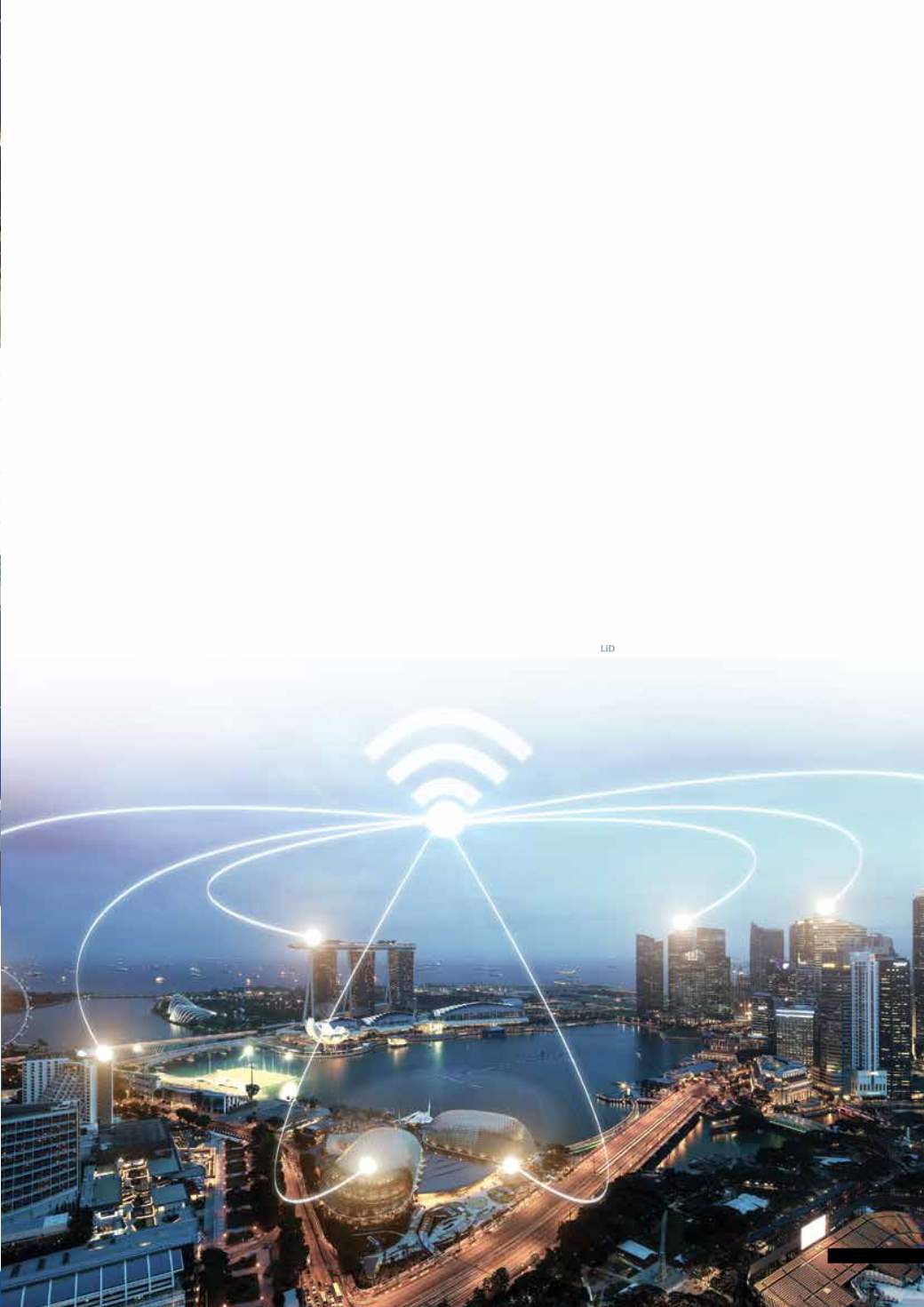

essential. Naturally, in my view the road lighting
infrastructure will be the backbone for enabling
smart cities.
Programmable drivers as part of
smart luminaires
A programmable LED driver can be pre-pro-
grammed at manufacturing level with different
dimming profiles, taking into account night variation
according to seasons. This means that once instal-
lation has been completed, the luminaires can do
the following in a 12 hour period:
1. From 18:00 switch onto full power.
2. From 22:00 to 00:00 dim to 50% of full power.
3. From 00:00 to 04:00 dim to 10% of full power.
4. From 04:00 to 06:00 go back to full power,
5. By including sensors, the luminaires can go to
full power when sensing movement, remain
at 100% and then fall back into their dimming
profile after no motion has been detected for
a period of time.
Intelligent drivers integrating optimum five-level
dimming programs can be incorporated into lumi-
naires. The drivers work autonomously by taking
switch-on and switch-off times as reference points.
This saves electricity consumption, prolongs
luminaire lifetime, reduces carbon emissions and
enables smart cities to grow. Over time, the savings
can be used to install active lighting control systems
that enable better planning by making municipal-
ity officials aware when a light is malfunctioning;
when an accident has occurred; when cable theft
is taking place and how a particular stretch of road
is used, all in real time.
In conclusion:
we tend to believe that smart
cities are a thing of the future but, in fact, they
are here now, and it is vital that the public sector
becomes more efficient. IoT and other integrating
technologies are essential to enable smart city
growth. Lighting is the great enabler and lighting
designers will fulfil roles that require much more
than simply lighting, at least in the road and urban
environment. Road and urban lighting will be the
backbone of the development of smart cities. Smart
cities are about people and their empowerment
and it is time to start planning and implementing
in readiness for the future.
Retief Coetzer presented this paper at the 2017 IESSA
Congress held in CapeTown from 15 to 17 May. He was the
winner of the Junior Professional Best Paper Award 2017.
7
LiD
MAY/JUNE 2017
















